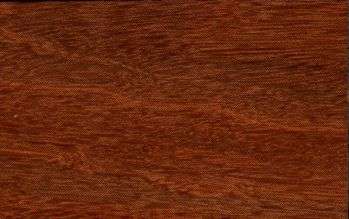
Black ironbark (Eucalyptus paniculata)
Family: Myrtaceae
Common names: Black ironbark, Grey ironbark, Ironbark, Paniculata gum, Red ironbark, She ironbark, White ironbark
Distributed in: Australia (Oceania and S.E. Asia)
Distribution overview: Distributed along the New South Wales east coast and adjacent foothills in Australia.
Common uses: Agricultural implements, Boat building (general), Boat building: framing, Boat building: planking, Bridge construction, Cabinetmaking, Decks, Flooring, Flooring: industrial heavy traffic, Furniture, Handles: general, Heavy construction, Joinery, Ladders, Light construction, Paneling, Piling, Posts, Railroad ties, Sporting Goods, Toys, Vehicle parts, Wharf construction, Wheel spokes
Tree size: Trunk diameter is 100-150 cm
Colors: the heart isReddish brown, Yellowand the sapwoodWhite to yellow, Yellow.The grain isStraight, the textureFine to medium
Natural durability: Susceptible to attack from termites (Isoptera), Very durable
LightInduced Color Change: Darker
Kiln Schedules: UK=B US=T2C2/T2C1 Fr=2
Drying Defects: Severe surface checking, Slight surface checking
Tree Identification: Bole/stem form is straight
Comments: General finishing qualities are rated as satisfactory
Blunting Effect: Blunting effect on machining is severe
Boring: Difficult
Cutting Resistance: Cutting Resistance with green wood is difficult
Gluing: Easy to glue
Nailing: Difficult to nail, Pre-boring recommended
Planing: Planes well, to a good finish
Resistance to Impregnation: Sapwood is permeable
Response to hand tools: Difficult to machine
Screwing: Difficult to screw
; Turning: Good results
Polishing: Good; Varnishing: Good;
- Numerical data Metric
- Numerical data English
- Strength properties
- References
 |
 |
 |
 |
| Item |
Green |
Dry |
Metric |
| Specific Gravity |
|
|
|
| Density |
|
849 |
kg/m3 |
| Bending Strength |
1212 |
1765 |
kg/cm2 |
| Crushing Strength |
622 |
859 |
kg/cm2 |
| Hardness |
|
1298 |
kg |
| Impact Strength |
|
|
cm |
| Shearing Strength |
|
196 |
kg/cm2 |
| Stiffness |
171 |
199 |
1000 kg/cm2 |
| Tangential Shrinkage |
|
|
% |
| Radial Shrinkage |
5 |
|
% |
| Weight |
833 |
833 |
kg/m3 |
| Maximum Load |
0,84 |
1,19 |
cm-kg/cm3 |
| Toughness |
|
288 |
cm-kg |
| Static Bending |
|
|
kg/cm2 |
|
 |  |  |  | | Item | Green | Dry | English | | Bending Strength | 17241 | 25113 | psi | | Density | | 53 | lbs/ft3 | | Hardness | | 2862 | lbs | | Maximum Crushing Strength | 8859 | 12223 | psi | | Shearing Strength | | 2800 | psi | | Stiffness | 2441 | 2838 | 1000 psi | | Toughness | | 250 | inch-lbs | | Work to Maximum Load | 12 | 17 | inch-lbs/in3 | | Weight | 52 | 52 | lbs/ft3 | | Radial Shrinkage | 5 | | % | | Tangential Shrinkage | 9 | | % | |
Density (dry weight) = 61< 0
Bending strength (MOR) = high 0
Max crushing strength (stiffness) = very high 1
Max. crushing strength = high
Shrinkage, Tangential = fairly large
Density (dry weight) = 53-60
Toughness -hammer drop = medium
Shrinkage, Tangential = large
Shrinkage, Radial = fairly large
Hardness (side grain) = Hard
Density (dry weight) = 46-52 lbs/cu. ft.
Audas, J.W.,Native Trees of Australia,Whitcombe & Tombs PTY. LtdBanks, C.H., Schoeman, J.P., Otto, K.P.,1977,The Mechanical Properties of Timbers with particular reference to South,Africa,South African Forestry Research Institute Bulletin,(Ed.,Schoeman, J.P. 1973 & Otto K.P. 1976,No.48Banks, C.H.,1954,The Mechanical Properties of Timbers with Particular Reference to those,grown in the Union of South Africa,Journal of the South African Forestry Association,No. 24 pp.44-65,[South,African Forestry Journal]Banks, C.H.,1970,The Durability of South African Wood and Wood Base Building Materials,South African Forestry Journal,No.75Boas, I.H.,1947,The Commercial Timbers of Australia - Their Properties and Uses,Council for Scientific and Industrial Research, MelbourneBois, P.J.,1966,The Strength Properties of Tanzania Timbers,Tanzania Forest Div. Util. Sec. Moshi Tech. Note, No.35Bolza, E., Keating, W.G.,1972,African Timbers - the Properties, Uses and Characteristics of 700 Species,C.S.I.R.O. Div. of Building ResearchBolza, E., Kloot, N.H.,1963,The Mechanical Properties of 174 Australian Timbers,C.S.I.R.O. Division of Forest Products Technological Paper,No.25Brown, W.H.,1978,Timbers of the World, No. 8 Australasia,TRADA, Red Booklet SeriesFarmer, R.H.,1972,Handbook of Hardwoods,HMSOForestry Commission of New South Wales,1987,Timbers used in New South Wales for Domestic Buildings,Forestry Commission of New South Wales, Technical Publication No.6Gay, F.J., Et al,1955,Standard laboratory colonies of termites for evaluating the resistance of,timber, timber preservatives and other materials to termite attack.,C.S.I.R.O., Australia Bulletin,No.277Hall, N., Et al,1970,Forest Trees of Australia,Australian Government Publishing Service, CanberraHoward, A.L.,1948,A Manual of Timbers of the World.,Macmillan & Co. Ltd. London 3rd ed.Lavers, G.M.,1983,The Strength Properties of Timber (3rd ed. revised Moore G.L.,Forest Products Research Laboratory, Princes Risborough, Building Research,Establishment Report (formerly Bulletin No.50)Maiden, J.H.,1917,Forestry Handbook Part II Some of the Principal Commercial Trees of New,South Wales,William Applegate Gullick, Government Printer, Sydney.Murira, K.,1984,Natural Durability Tests of Tanzanian Timbers 1955 - 1982,Tanzania Forestry Research Institute, Timber Utilisation Research Centre,,Moshi.Patterson, D.N.,1963,The strength of Kenya timbers, their derivation and application,Kenya Forestry Department Research Bulletin,No.23Patterson, D.,1988,Commercial Timbers of the World, 5th Edition,Gower Technical PressRendle, B.J.,1969,World Timbers (3 Vols.,Ernest Benn Ltd. LondonScott, M.H.,1935,Weights of South African Growth Timbers,South African Department of Agriculture and Forestry Bulletin,No.145,Forest Products Institute, Forestry Series No.1Scott, M.H.,1953,Utilisation Notes on South African Timbers,South African Forestry Department Bulletin No.36South African Lumber Millers Assoc.,1969,Notes on some Commercially Available Hardwoods,S.A.L.M.A. Timber Info. Centre Timber Technical Guide,No.1Stewart, A.M., Kloot, N.H.,1957,Mechanical Properties of Timbers,C.S.I.R.O., Australia Bulletin,No.279Takahashi, A.,1978,Compilation of Data on the Mechanical Properties of Foreign Woods (Part,III) Africa,Shimane University, Japan, Research Report on Foreign Wood No. 7The Australian Timber Journal & Building Products, Merchandiser,1969,Timber Durability and Preservation,Supplement to Australian Timber Journal 35(4) Tech. Timb. Guide No.8
|








